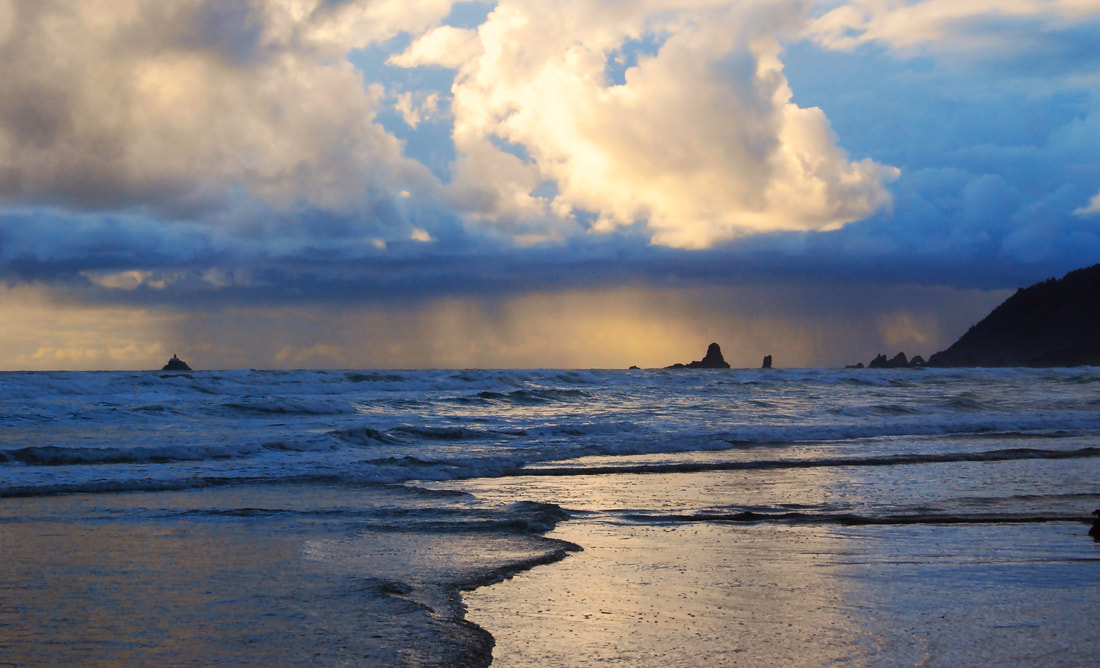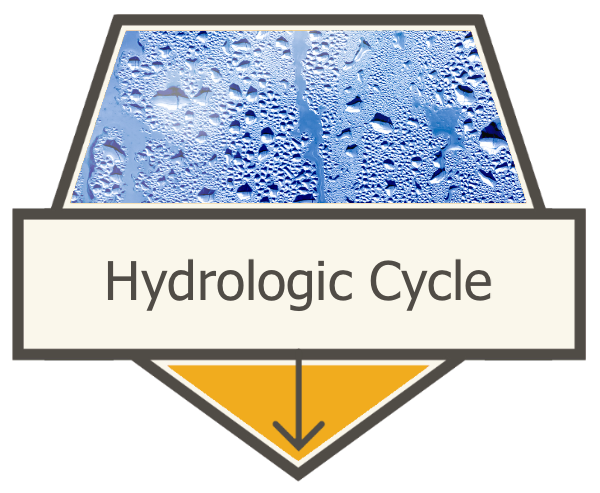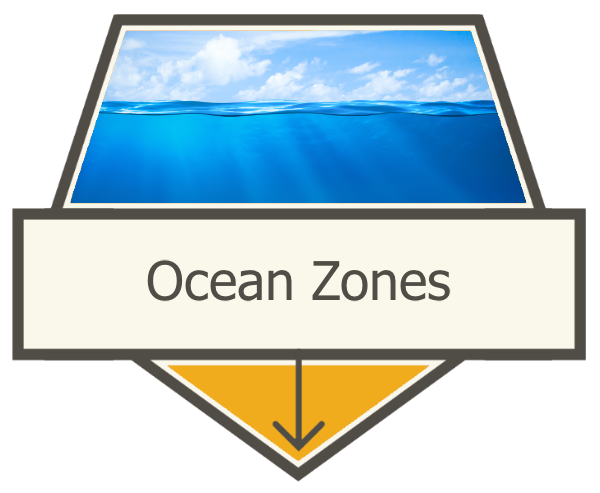EXPERIENCE > SCIENCE TOOLS
In the same way the liquid water of the five great oceans is interconnected, so is all water on Earth. Water constantly moves in recycling pattern in what is known as the hydrologic cycle. During this cycle, water may change from frozen to liquid to gaseous states – moving from place to place but always present.
To visualize how this takes place, take a look at the diagram you can download as a PDF at the bottom of this page. The diagram uses the Oregon Coast as an example. You’ll notice that the liquid water of the Pacific Ocean is being constantly stirred by currents and winds. Some of this water breaks into smaller molecules through evaporation, leaving behind its salt content and rising into the air as fresh water. (If this process occurs over the land, it’s called evapotranspiration.)
In the same way the liquid water of the five great oceans is interconnected, so is all water on Earth. Water constantly moves in recycling pattern in what is known as the hydrologic cycle. During this cycle, water may change from frozen to liquid to gaseous states – moving from place to place but always present.
To visualize how this takes place, take a look at the diagram you can download as a PDF at the bottom of this page. The diagram uses the Oregon Coast as an example. You’ll notice that the liquid water of the Pacific Ocean is being constantly stirred by currents and winds. Some of this water breaks into smaller molecules through evaporation, leaving behind its salt content and rising into the air as fresh water. (If this process occurs over the land, it’s called evapotranspiration.)
|
This fresh water is carried on the winds over the land, but when it hits the Coast Range Mountains it’s forced higher into the atmosphere. As the water rises, it cools and its molecules join together into precipitation which falls back onto the land as snow, rain or sleet. If in a frozen state, the water may be trapped for a while until it begins to melt and turns back into a liquid called runoff. The liquid water drains off the mountains, filling the creeks, streams and rivers on either side. Some of this water may sink through the ground into aquifers. Some may flow back to the Pacific Ocean, home to millions of other organisms, and where the cycle starts all over again.
|
Along the way, this water is used by a variety of species. It allows the thick coastal forest to thrive; or is routed by farmers to irrigate crops of grapes, grass seed or hazelnut trees. Coho salmon use the flowing streams to spawn, some being caught along the way by a lucky fisherman or a hungry black bear. A herd of Roosevelt elk drink by the edge of a lake; or a small town pumps water from an underground aquifer for a variety of household uses.
Related Features:
Earth: The Ocean Planet: Seen from space, the Earth is clearly a world of water. In fact, life here simply wouldn't exist without this one huge, interconnected ocean.
So What's the Big Deal About Water? There is one major fact about life on Earth: it could not, would not exist if it weren’t for the presence of water.
Water on a Cosmic Scale: Right now, as the eyes of humanity turn more and more to visiting other planets in our solar system, what’s the one thing we’re searching for most often? Would you believe it's water?
So What's the Big Deal About Water? There is one major fact about life on Earth: it could not, would not exist if it weren’t for the presence of water.
Water on a Cosmic Scale: Right now, as the eyes of humanity turn more and more to visiting other planets in our solar system, what’s the one thing we’re searching for most often? Would you believe it's water?








